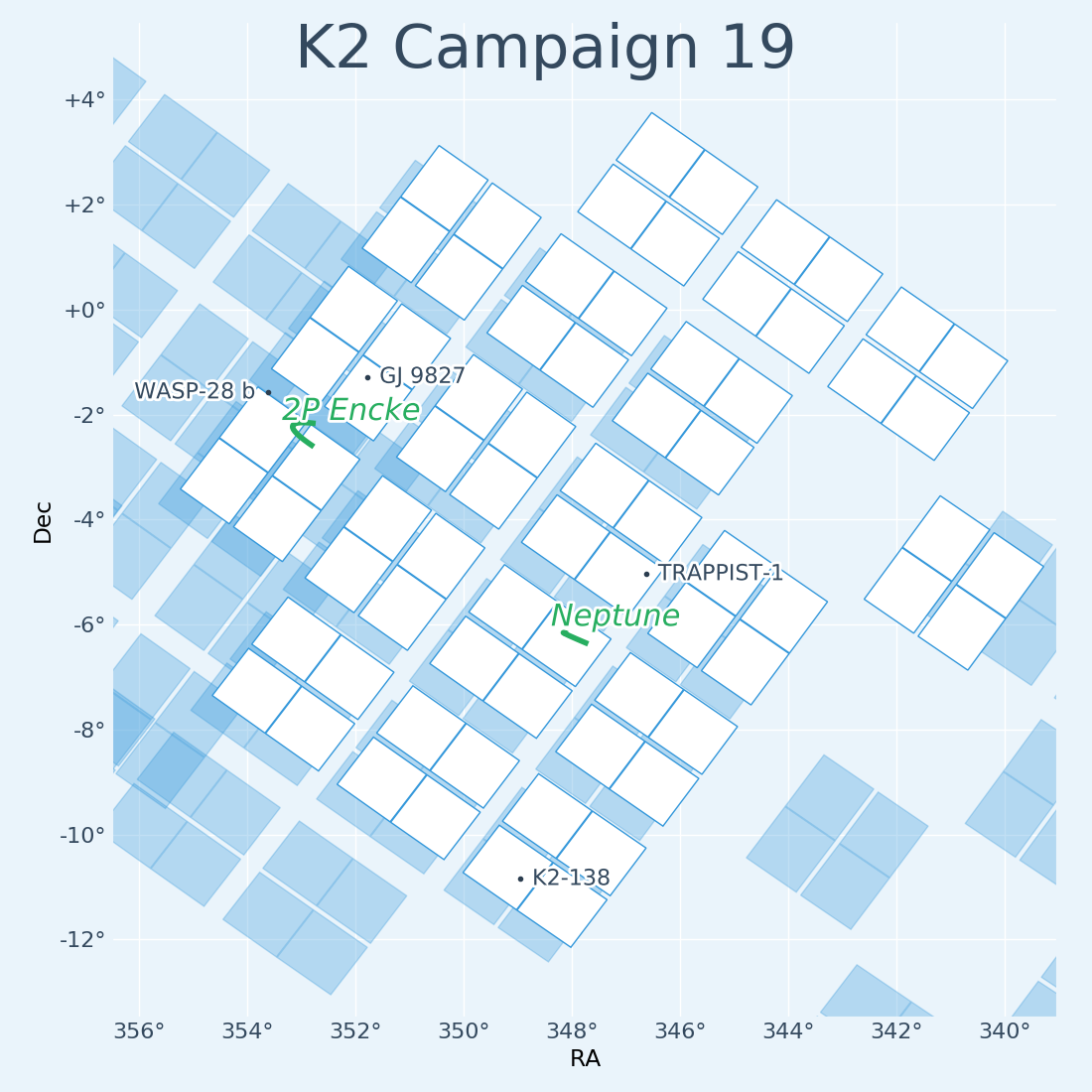The pipeline-processed data for K2 Campaign 19 are now available for download from the K2 data archive at MAST. The C19 data release notes are also available, and users are strongly encouraged to read the release notes, particularly due to the complicated pointing history and resulting data quality of C19.
Campaign 19 is K2's final campaign. Observations for C19 were collected for about a month, at which point the Kepler team received data showing that the spacecraft no longer had sufficient remaining fuel to point precisely enough to gather useful scientific data, and observations were again paused and then later successfully downloaded. While an attempt was made to start Campaign 20, without sufficient fuel end-of-flight was declared and the spacecraft was retired.
Campaign 19 partially overlaps with Campaigns 3 and 12, as well as the engineering test field, while also surveying ~15 deg2 of previously unstudied sky. The Campaign 19 target list includes 33,863 standard long cadence and 216 standard short cadence targets located towards the constellation of Aquarius. The target list includes the nearby planet systems TRAPPIST-1 and GJ 9827. These systems host some of the most amenable small planets for atmospheric characterization known to date, i.e., TRAPPIST-1 f, GJ 9827 b, and GJ 9827 d.
Other notable targets include:
- Dozens of confirmed and candidate exoplanets previously discovered during K2 Campaigns 3 and 12, including K2-138, the resonant system of five planets discovered by citizen scientists, and HD 215152, a system known to contain four short-period RV planets.
- A large sample of low-mass flare stars and white dwarfs in short cadence.
- 11,501 galaxies are being surveyed for supernovae and other transients.
- 30 Solar System objects are being monitored, including planet Neptune and its moon Triton in short cadence, and comet 2P/Encke in long cadence.
Users of the data are strongly encouraged to contact, cite, and collaborate with the teams who proposed the observations, as listed on the Approved Progams & Targets page.
The figure below illustrates the location of the field and its notable targets.
